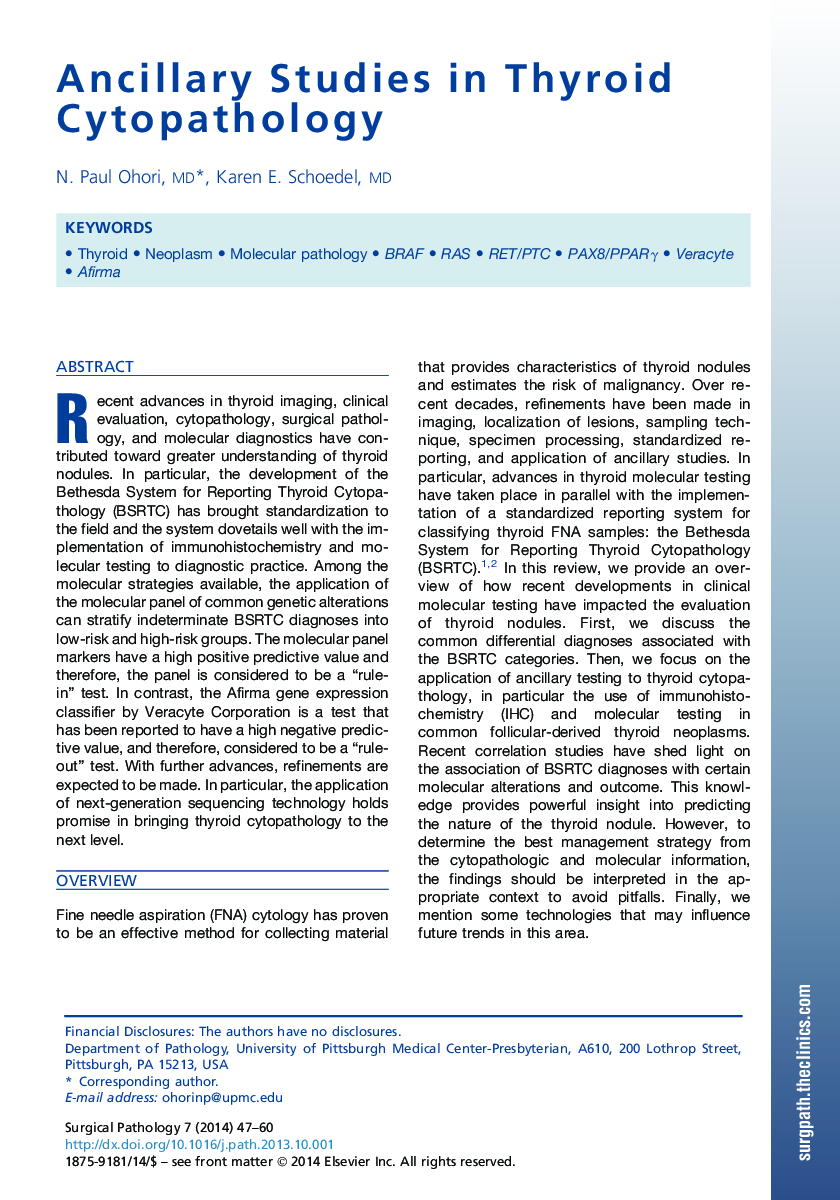| Article ID | Journal | Published Year | Pages | File Type |
|---|---|---|---|---|
| 3334567 | Surgical Pathology Clinics | 2014 | 14 Pages |
Abstract
Recent advances in thyroid imaging, clinical evaluation, cytopathology, surgical pathology, and molecular diagnostics have contributed toward greater understanding of thyroid nodules. In particular, the development of the Bethesda System for Reporting Thyroid Cytopathology (BSRTC) has brought standardization to the field and the system dovetails well with the implementation of immunohistochemistry and molecular testing to diagnostic practice. Among the molecular strategies available, the application of the molecular panel of common genetic alterations can stratify indeterminate BSRTC diagnoses into low-risk and high-risk groups. The molecular panel markers have a high positive predictive value and therefore, the panel is considered to be a “rule-in” test. In contrast, the Afirma gene expression classifier by Veracyte Corporation is a test that has been reported to have a high negative predictive value, and therefore, considered to be a “rule-out” test. With further advances, refinements are expected to be made. In particular, the application of next-generation sequencing technology holds promise in bringing thyroid cytopathology to the next level.
Related Topics
Health Sciences
Medicine and Dentistry
Hematology
Authors
N. Paul MD, Karen E. MD,
